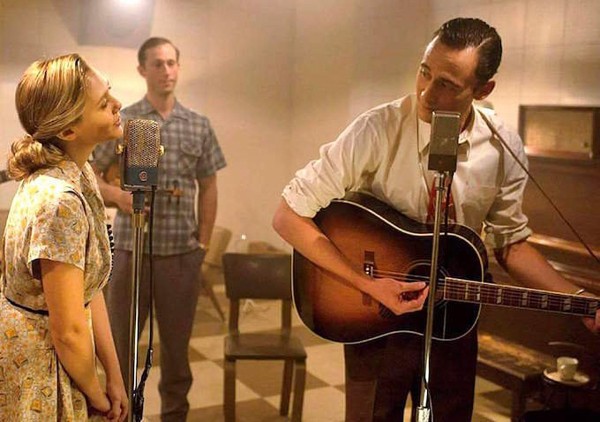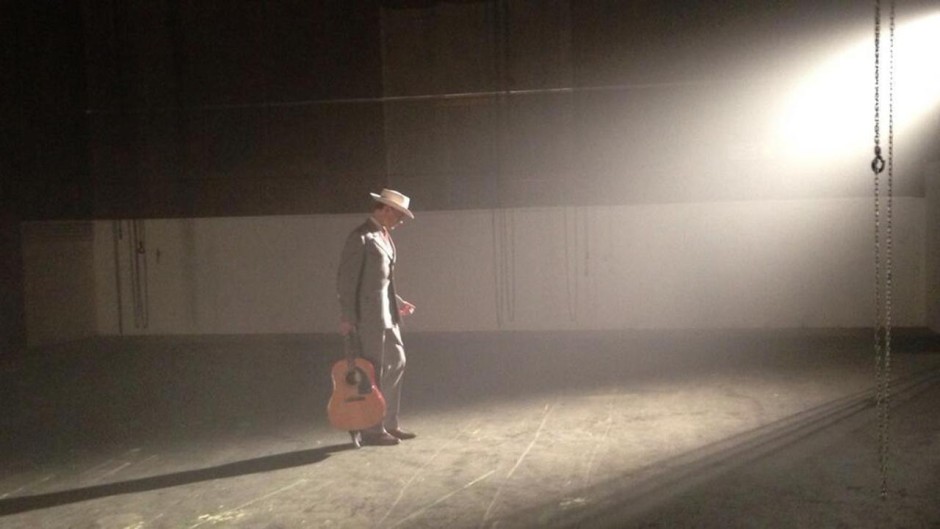Being partial to the plaintive melodies of American country music, I looked forward to Marc Abraham’s biopic about Hank Williams, the iconic American country singer and songwriter.
Williams, an original, carved out of niche for himself with memorable songs like Cold, Cold Heart, Hey, Good Lookin, Your Cheatin’ Heart and I’m So Lonesome I Could Cry.
Mining simple yet poetic lyrics from his own experiences, he bared his soul before millions of fans, achieving enormous popularity and fame because ordinary folk could easily identify with his travails.
I Saw The Light, which opens in Canada on April 8, covers the last eight years of his short and tempestuous life.
Tom Hiddleston, a British actor, portrays Williams in a stellar performance. Hiddleston’s Southern accent is spot on. And he sings his own songs, which are piercing and heart-rending. Aside from all that, he’s a subtle actor who can modulate his emotions quite effortlessly.
Elizabeth Olsen, who plays his wife Audrey, is an accomplished actor as well. Together, they add heft to a better-than-average film, which leaves a rounded portrait of a performer whose personal deficiencies all too often blocked his progress.
The movie, ably directed by Abraham, starts in 1944 and ends in 1953, a period during which Williams rose from obscurity to stardom.
In one of the first scenes, in rural Alabama, a disreputable-looking justice of the peace marries Williams and Audrey in a hasty ceremony. Their marriage will be a stormy one. Williams drinks too much, takes drugs and is prone to temper tantrums. In addition, he shows up late for gigs. “Boy, I’m a professional at making a mess of things,” he says in a reference to his tardy habits.

His mother, Lille (Cherry Jones), is aware of her son’s drawbacks, but holds him in awe, while denigrating Audrey.
At 23, he auditions for the Grand Ole Opry in Nashville. He doesn’t make the grade as a vocalist, but signs on as a songwriter. In the meantime, he tours with his band, allowing Audrey to sing the occasional song. Band members object to her presence, claiming she doesn’t have the right stuff, thrusting Williams into an awkward position.
One of the most tender moments occurs when Audrey discloses she’s pregnant. Williams’ eyes light up in sheer delight, and he and Audrey hug playfully.
Williams’ rendition of Lovesick Blues, one of his greatest songs, finally lands him in the Grand Ole Opry. Williams, dressed in a blindingly white cowboy suit adorned with frills and spangles, brings down the house with Hey, Good Lookin. Hiddleston, swaying back and forth rhythmically as he belts out one song after another, is a marvel to watch.
Throughout the film, Abraham deals with Williams’ chronic back problem. The pain was so severe that he was confined to bed rest, placed on a regimen of medication and forced to submit to surgery.
In a revealing scene set in New York City, Williams is interviewed by a reporter who tries to probe beneath the surface. Before he stalks off in a huff, angered by the journalist’s intrusive questions, Williams says, “Everybody has a little darkness in them. I’m talking about things like anger, misery, sorrow, shame. I show it to them, and they don’t have to take it home. They expect I can help their troubles.”
He jocularly adds, “I reckon they think I’m sort of some Red Cross.”
Williams’ romantic relationships with two other women, Billie Jean Jones (Maddie Hasson) and Bobbie Jett (Wrenn Schmidt), are also explored. These liaisons were problematic as well.
Williams was a man who marched to his own drummer, and this stubborn aspect of his personality comes across loud and clear in I Saw the Light.
